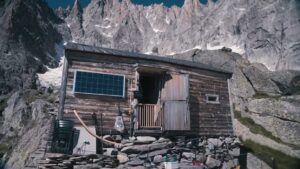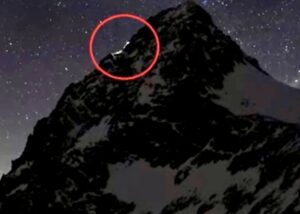A new paper by archeologists from the Oppland County Glacier Archeological Program is changing the narrative about one of the world’s most famous mummies.
That would be Ötzi, a 5,000-year-old mummy that emerged from a melting glacier in 1991. It’s one of the world’s most famous and well-examined archaeological finds. Scientists began studying the mummy shortly after hikers found it in the Timmelsjoch Pass on the Austrian/Italian border. In the decades since, they have never stopped looking for more answers.
The narrative, formed largely by initial lead archeologist Konrad Spindler, was that Ötzi took refuge from a violent attack by fleeing into the pass during the winter. Then he succumbed to his wounds and/or the elements while lying in a gully.
It was this gully that protected the remains and associated gear from the glaciers that formed shortly thereafter. That would explain why glaciers didn’t grind Ötzi into powder. Spindler viewed the circumstances behind Ötzi’s preservation as entirely unique, leaving doubt as to whether such a find would ever emerge again.

A view of the Timmelsjoch Pass at the Austrian/Italian border. Photo: Shutterstock
Lars Pilø, the lead author of the new paper, disagrees.
In the 30 years since the initial find, scientists have made huge strides in the fields of climatology, archaeology, and glaciology. In fact, an entirely new field — glacial archaeology — has developed in the years since Ötzi emerged.
As glaciers melt all over the world, Ötzi is no longer such an anomaly.
New conclusions
“No one expected similar sites,” Thomas Reitmaier, an archaeologist at the Archaeological Service of the Canton of Grisons in Switzerland, told Science. “Now, we have lots, and we find this one fits quite well with the picture of glacial archaeology we’ve developed.”
Pilø and his fellow authors argue that rather than being immediately covered by snow, Ötzi died in the spring. He was repeatedly covered and uncovered by snow as the seasons and years progressed, they posited.
The history of the ice at the find spot shows that there is unlikely to have been a moving glacier there after the death of Ötzi, contrary to the claims in the scientific literature 15/18
Photo: Gernot Patzelt, 1991. pic.twitter.com/VNbHYDvkMk— Secrets Of The Ice (@brearkeologi) November 7, 2022
The archaeologists also argue that Ötzi probably died somewhere above the gully, and his corpse was later washed there by spring meltwater.
This theory also explains the state of Ötzi’s equipment, which emerged from the ice well-preserved from the ravages of time. Yet it’s still slightly damaged. Spindler and other scientists previously believed the damage came from the violent attack that ended Ötzi’s life.
Secrets of the Ice has a full, incredibly detailed write-up worth checking out.






